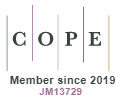From the Chalice to the Smart City: Attraction and Repulsion within Sanctified Space in the 21st Century: Projects in the New Urban Centres
DOI:
https://doi.org/10.15415/cs.2014.12006Keywords:
Sanctified space, sacred space, forms of sacred, churches, brand, project, attractiveness/repulsion, rituals, arts, culture, traditionAbstract
Which are the issues posed for the construction of a church in the urban fabric of the third millennium? Which are, currently, the places of worship -- more or less visible -- capable of attracting the faithful, not just the inhabitants but also migrants or visitors in transit? What kind of conflicts can the construction of a church, or more generally of a sanctified space, create in a neighbourhood and, which could be the conditions to avoid it? In some cases, places of worship contribute to reinforce the feeling of belonging and/or identity. They are also points of orientation in the cities, which exceed the scale of their communities, opening up to other confessions, also. They participate in urban life through many events (concerts, kermesses, theatrical plays) that we can qualify within culture. This paper interrogates the notion of sanctified space from the spatial point of view, through the analysis of the sanctified space built in Rome in the new place of urban centre, but also from the standpoint of dividual and collective representations. Between tradition and future, attractiveness and repulsion, beyond the symbolic dimension (brand) of the sanctified building, the text places the question of methodological processes that lead to the construction of a space, both real and virtual. In the final argument, the comparison between the Italian and French experiences can help to identify the differences between the two systems -- of a technical and sociological nature -- in order to identify the manner in which we can overcome the mono-functional and restrictive use of the worship sites, in favour of multi-functional uses, both internal and aggregated, thereby allow a wider ownership of these spaces, in the present era where the churches are gradually becoming more and more empty.
Downloads
References
BOYER, L. (1967) Architecture and Liturgy. Indiana: Notre Dame.
BRION, M. (1970) Lieux de culte nouveaux, Faut-il encore costruire des églises?. Paris:Fleurus.
CRIPPA, M. A. (2007) Luoghi e modernità [Lieux et modernité], Milano: Jaca Book.
GENNARO, P. (1992) Architettura e spazio sacro nella modernità. Milano: Abitare Segesta Cataloghi.
GRESLERI, G. ET AL. (2004) Chiesa e quartiere: storia di una rivista e di un movimento per l’architettura a Bologna. Bologna: Compositori.
GUARDINI, R. (1964) L’opera d’arte, in Scritti filosofici. I. Milano: Fratelli Fabbri.
HERVIEU-LÈGER, D. (2003) Il pellegrino e il convertito. La religione in movimento. Bologna
HOUTART, F. and RÉMY, J. (1968) Milieu urbain et communauté chrétienne, Paris: Mame.
INGALLINA, P. (2009) Nuovi scenari per l’attrattività del territorio [Nouveaux scénarios pour l’attractivité du territoire]. Milano: Franco Angeli.
LEBRUN, P. (2004) Le temps des églises démontables. L’architecture religieuse face aux trasformations urbaines des année 1950 et 1960.Histoire urbaine. 2004/1. Paris.
LEBRUN P. (2011) Le temps des églises mobiles - L’architecture religieuse des trente glorieuses.Gollion: Editions Infolio.
MAGGIANI, S. (2003) Chiese, arte architettura e liturgia, Milano: Silvana editoriale.
MARTINI, C. (1996/1997) Il mistero indicibile. Casabella. 640/641. Milano: Elemond.
Masiero, R. (1996/1997) Rudolf Schwarz: l’altra modernità. Casabella. 640/641. Milano: Elemond.
PHENT, W. (1996/1997) La luce nell’oscurità. Casabella. 640/641. Milano: Elemond.
Pinto, D. (2004) La France et ses quatre religions. In Esprit.
Schwarz, R. (1963) Catalogue M. Schwarz, Heidelberg: Akademie der Künste Berlin.
SPAZIDEA. (1992) Construire le logement/Edilizia residenziale en France-in Italia. Paris/Roma: Eurorex,
Zukin, S. (2010) Naked City: The Death and Life of Authentic Urban Places. USA: Oxford University Press.
Web
Self Made Urbanity http://smu-research.net/smu/italian
Theses
BENKOULA, S. M. E. H. (2005), La mosquee et ses enjeux d’insertion contemporaine dans la ville « non musulmane ». Institute d’urbanisme de Paris, Paris.
FRÉMAUX, C. (2005) Construire des églises en France dans la seconde moitié du XXe siècle. De la commande à la réalisation. Nord-Pas-de-Calais (1945-2000). Université Rennes 2-Haute-Bretagne, U.F.R. Arts, lettres, communication, Renne.
CHATELAN, O. (2009) Les chatolique et la croissance urbaine dans l’agglomération lyonnaise pendant les Trente Glorieuses (1945-1975). Faculté de Géographie, Histoire, Histoire del’art, Tourisme, Université Lumière Lyon 2. Lyon.
LEBRUN, P. (2001) Le complexe du monument: les lieux catholique en France durant les trentes glorieues. Faculté d’histoire , Univérsite Lumiére Lyon 2. Lyon.
MARCUCCETTI, A. (2012) La costruzione dello spazio del sacro cattolico nel xxi secolo, in Italia e Francia: tra tradizione e futuro, attrattività e repulsione. i progetti delle chiese dopo il grande giubileo: gli esempi di Roma e Parigi. Università di Roma “Sapienza”-Université Lille 1.
Downloads
Published
Issue
Section
License
Articles in the Journal of Creative Space (Creat. Sp.) by Chitkara University Publications are Open Access articles that are published with licensed under a Creative Commons Attribution- CC-BY 4.0 International License. Based on a work at https://cs.chitkara.edu.in. This license permits one to use, remix, tweak and reproduction in any medium, even commercially provided one give credit for the original creation.
View Legal Code of the above-mentioned license, https://creativecommons.org/licenses/by/4.0/legalcode
View Licence Deed here https://creativecommons.org/licenses/by/4.0/
 |
Journal of Creative Space by Chitkara University Publications is licensed under a Creative Commons Attribution 4.0 International License. Based on a work at https://cs.chitkara.edu.in/ |







